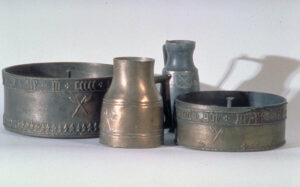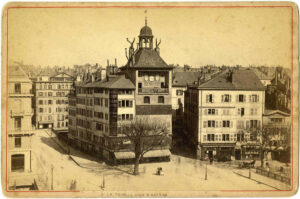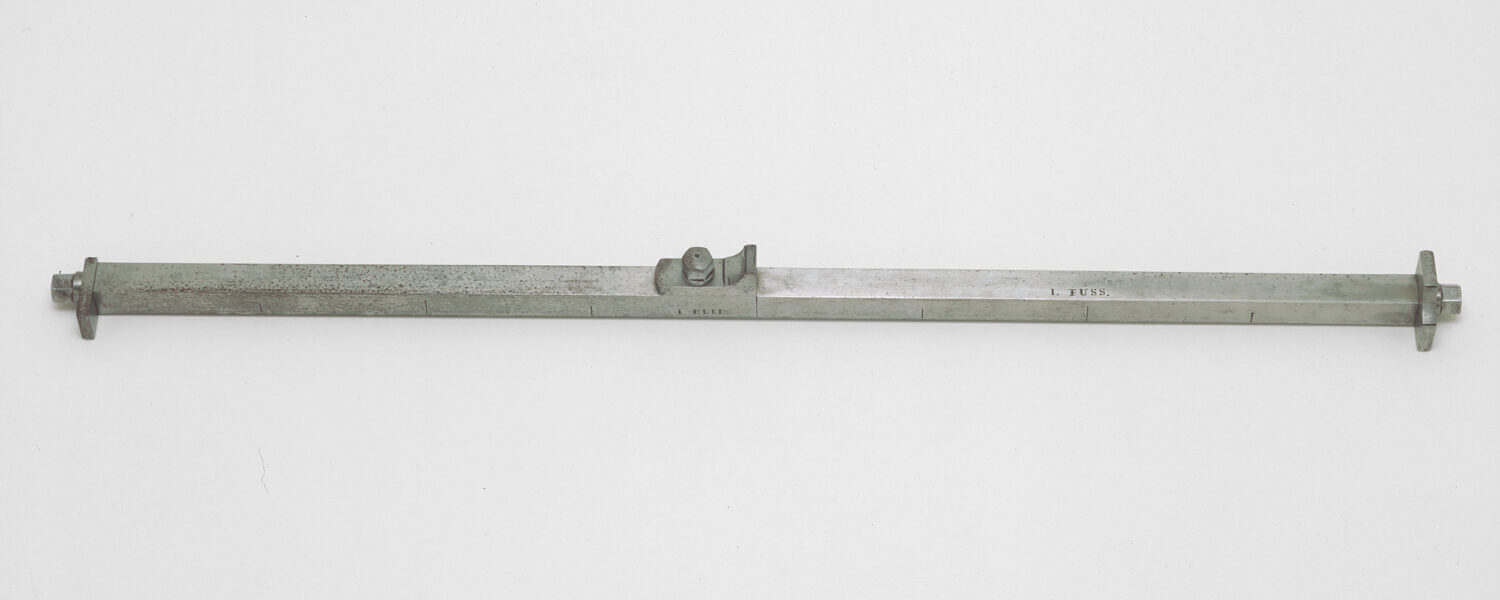

We take counting and measuring for granted in our everyday lives. Today, the International System of Units (SI) (Système international d’unités) regulates how this is carried out around the world. It wasn’t always as simple as it is today, however. In Switzerland, especially, for a long time there was a confusing jumble of measurement units for gauging length, cubic measure, area, liquid and weight.
Unique to the Locality
Cereals, legumes, nuts and salt, for example, were not weighed but measured out. Measures of capacity served as measuring vessels, with different measures being used depending on the composition of the cereal: “smooth” dehusked crops were measured out in one measure, while “raw” grains that had not yet been dehusked were measured in another. There was also an impressive variety of measuring vessels for liquids. In addition to unitary measures, such as a saum, pail, char or pinta, that varied per region, there were also special measuring vessels depending on the liquid: wine was generally measured using a different measure to that used for milk, oil, must or spirits.

The extent to which measurement units were based on the product to be measured and local circumstances can be illustrated via the “Juchart” unit of area measurement. The word comes from the Latin iugum, meaning yoke. It originally referred to the area of a piece of land that could be ploughed within a day by two oxen yoked together. In accordance with this, a Juchart in the grain-growing zone of the Mittelland region of Switzerland was much larger than the same unit in hilly or mountainous regions. There were also measures for viticulture based on estimating the work performed within a set time period, e.g. a Mannschnitz or ouvrier. And, in the Alpine pastures, in addition to these types of units of area measurement there were also similarly conceived yield measurements: a pasture’s yield capacity was estimated according to the number of cows that could be grazed there in summer.

Measures With Different Lengths
Units of measurement also varied from place to place and from purpose to purpose. And that wasn’t the end of the story: different quantities were recorded under the same description depending on the region. This was the case with the cubit and also the fathom measure of length, which in many places equaled ten feet. There was the small fathom though, which was equal to six feet. One foot was in turn divided into 12 inches and each inch subdivided into 12 lines. The Fribourg foot, for example, had four lines more than the Berne foot, however. Used as a length of measurement, the rod had nine different lengths in the canton of Fribourg alone. In 1834, the statistician, geographer and historian Franz Kuenlin, member of the scholarly not-for-profit organization Swiss Society for the Common Good (SGG) and the Academy of Sciences, Humanities and Arts of Lyon, wrote the following in his work “Gemälde der Schweiz” [“Paintings of Switzerland”]: “It is notable, however, that the various measures are not uniform everywhere.” And: “How necessary it is to ensure that this oft glaring difference disappears sooner rather than later.”
The Revolution From France
In France, this difference was abolished in 1791. In the wake of the Revolution, the French National Assembly threw the former system of governance, together with the old imperial weights and measures, overboard and instead adopted a measurements system. Switzerland saw a reluctant move to standardization. In 1801, following the example of the French there was an initial resolution in the Helvetic Republic for a “generally uniform system of weights and measures in Helvetia”. Yet the corresponding law was unable to take effect because the Helvetic Republic was dissolved again in 1803. Nonetheless, in 1835 there was a concordat of 12 cantons regarding a “shared set of Swiss rules on measures and weights” that, in 1839, put this law into practice. Furthermore, the Swiss Constitution of 1848 stated: “The Confederation will introduce the same measures and weights across the entire Confederation on the basis of the existing Federal Concordat.” This nevertheless initially remained wishful thinking, because western Switzerland, southern Switzerland and the canton of Uri persisted with their systems. Different systems therefore continued to coexist. It was only in 1875, when Switzerland joined the Metre Convention – the forerunner of the SI – that weights and measures were standardized throughout the country.

Finally, Time Also Fell Into Step
Time was left out of the unification in 1848 and 1875. Local time therefore continued to apply. The time in St. Gallen, for example, differed from the time in Geneva by approximately 14 minutes. This was a challenge for the telegraph and railway systems, which were developing rapidly at the time – or, rather, it was a challenge for those making use of these innovative technologies. Those who wanted to travel by train from or via Geneva, for example, always had to keep three times in mind: the local time in Geneva; Berne time, which the Swiss trains operated on; and Paris time, which the French trains ran on. The Tour de l’Ile landmark in the center of Geneva therefore clearly displayed three clocks for everyone to see: Paris time, Geneva time and Berne time. From the middle of the 19th century, first the USA then the United Kingdom and other countries adopted coordinated time zones based on the Greenwich meridian. On 1 April 1892, the neighboring countries around Switzerland adjusted to common central European time. In a report to Parliament on 17 June of the same year, the Swiss Federal Council subsequently expressed the view “that the circumstances do not permit making Switzerland into an island in the tumultuous seas of commerce”. Since 1894, Switzerland too has had a standardized system of time in place; since 1978 the International System of Units has applied for all weights and measures.
Guido Balmer is the communications officer for the department of regional planning, environment, mobility and infrastruture of the canton of Fribourg and a freelance communications professional. He published this article on 8th April 2022 on the website of the Schweizerisches Nationalmuseum.
We thank the Swiss National Museum for having allowed us to re-publish the article.
You can also search the collection holdings of the Schweizerisches Nationalmuseum online.




